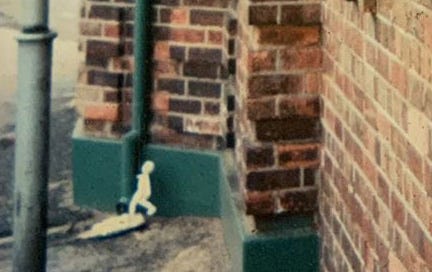In the mid-1990s, my mother showed me a rather peculiar photograph. It shows the side of a building that used to be on Mary Fitzgerald Square, across from Museum Africa in Newtown, Johannesburg. The image is unremarkable apart from a tiny white figure in the bottom left hand corner, appearing to dash across or towards a dark green down pipe. It is easy enough to make out a head with close cropped hair, a torso, and two legs, one of which even has a foot. On the day the photograph was taken, there was nothing to be seen in person. The figure was only spotted later, after the film had been developed. It was, and still is, exciting to contemplate what it may be. South Africa is a country awash with and connected to many liminal beings, resulting from mixed religious traditions, linguistic heritage and folklore, as well as the contemporary interjections of the paranormal and pop culture. Despite their ubiquitous presence, there are hardly any photographs or videos of these invisible citizens, so what could this curiosity be?
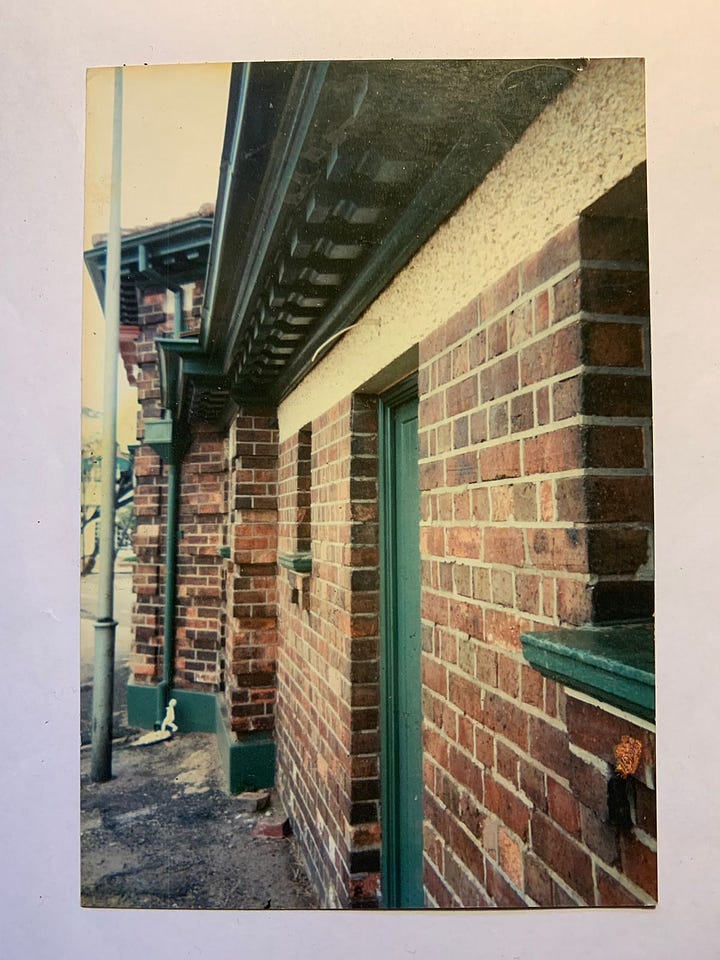

THAT’S THE SPIRIT
There are both natural and supernatural, both dead and living beings that co-exist across South African communities. Ancestors are particularly potent figures in South African traditional practices. If a living person is a compound of one part body and one part soul, then an individual joins the ancestors when these two halves are split at death, but it is incorrect to say that ancestors are dead. They have rather transcended the physical form into another state of being and consciousness. In this alternative form, they are able to interact with the living in benevolent or malevolent ways, depending on their respectful treatment immediately following their death and the degree of continued consultation and invocation by their living descendants.
Although also resulting from a death, a ghost is different to an ancestor. Where ancestors typically experience a ‘good’ death and are given a respectful place in a pantheon of deceased relatives, a ghost results from a traumatic death or an unrealised goal that results in a spiritual displacement. Ghosts are untethered or cut adrift, and are unable to take their eternal sleep or become an ancestor until they can resolve their reason for wandering. Another difference is that ghosts often take a recognisable human form. Ancestors have no visible figure, but can be perceived through other senses, including hearing and smell. The anthropologist Isak Niehaus has gathered numerous oral ghost stories from South Africa’s lowveld. Niehaus suggests that the typical South African understanding of ghosts stems from the crossover between rural indigenous traditions, the influence of migrants from other Southern African countries and the Judeo-Christian beliefs of Afrikaans farmers. The latter influence is particularly clear given that the words for ghost in Zulu (isipoki), Xhosa (isiporho) and Northern Sotho (sepoko) all derive from the Afrikaans word (spook).
GHOSTS ON FILM
During the nineteenth century, communicating with the dead through mediums (human and machine) reached a new fever pitch in Europe and the United States. Spirit photography arose from the convergence of a new social religious movement called Spiritualism and the new technology of the camera. Spirit photographers acted as intermediaries between the living subject of the photograph and the dead, taking the form of ghosts. Gifted with clairvoyant abilities, these mediums claimed to be able to perceive things beyond the scope of ordinary sensory ability. Invisible to the naked eye as the photograph is taken, ghostly figures would appear after the photographic image was developed, usually in the background and in an incomplete, wispy form. These images were latched onto by customers eager to behold evidence of life after death, even if the figures they would see were not directly known to them. Today, the high profile spirit photographers have all been debunked as shrewd con-artists. They were caught out for their fraudulent methods, including pre-preparing plates or film negatives with ghostly figures.
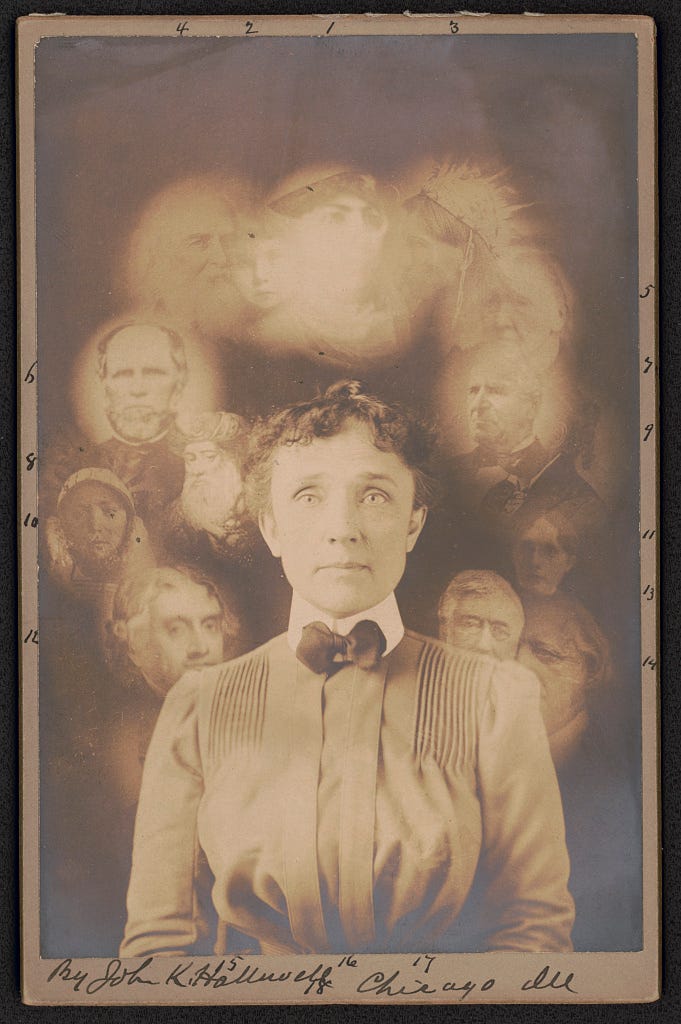
There are only a few examples of nineteenth century spirit photography that relate to South Africa and South Africans. In January 1909, W. T. Stead, an English newspaper editor, encountered a South African ghost in the London studio of Richard Boursnell, a British medium and spirit photographer. Boursnell claimed to have been visited by a deceased Boer commandant a few days before Stead’s sitting for his portrait. The spirit had identified himself as Piet Botha and sure enough, when Stead’s portrait was developed, the ghost of Piet Botha appeared in the photograph.
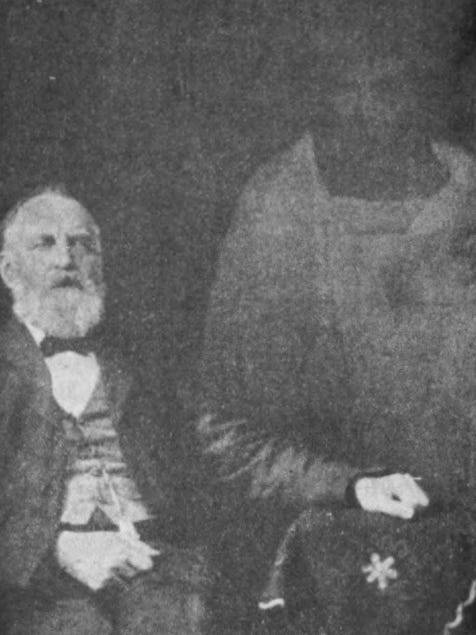
Stead, in awe of the artefact in his possession, made enquiries with South African delegates from the former Orange Free State. ‘Mr Wessels’ (possibly Cornelius Hermanus Wessels, later the administrator of the Orange Free State) claimed to recognise the man as Pietrus Johannes Botha, better known as Piet. He had died at the siege of Kimberley in 1899. Wessels explained that Piet was a close relative and that he even had a portrait of Piet hanging in his home. Others in the visiting party went on to corroborate this likeness. In 1910, an article in Light: A Journal of Psychical, Occult, and Mystical Research, a publication favourably disposed to spirit mediums, shared Stead’s excitement in writing:
The whole attitude of the Free State delegates, as described by Mr. Stead, was that of men who were forced to admit the fact of identity in spite of their own strong religious prepossessions as to the impossibility of any such photograph being taken in England. We do not see that anyone can go behind such testimony, as it is not that of persons predisposed in favour of Spiritualism.
Two decades later, Craig and George Falconer were spirit photographers operating in Edinburgh, Scotland. In October 1931, Alex Macintosh wrote about his photographic seances with the brothers in 1925 and 1926 for The International Psychic Gazette. He described his experience as follows:
This photograph is to me most convincing visible proof that there is intelligence and consultation shown by communications from the other side. Knowing what I do of the spirit visitors, and knowing also that the photographers could have no access to that knowledge I am disposed to accept this photograph as a sufficient voucher in itself for the perfect bona fides of the operators.
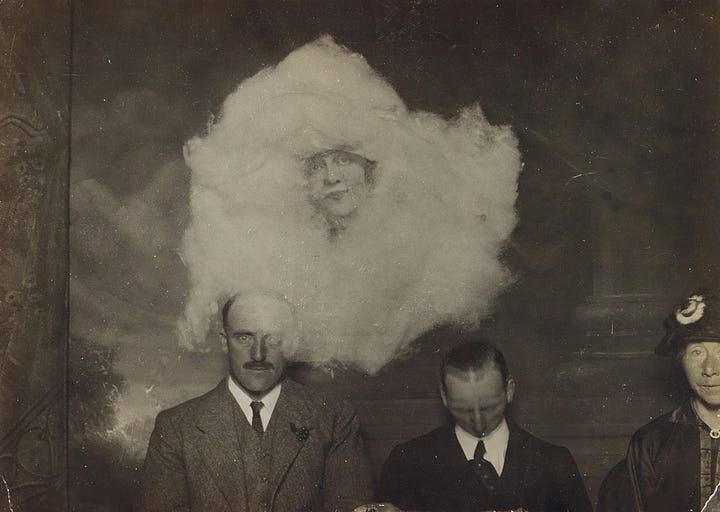
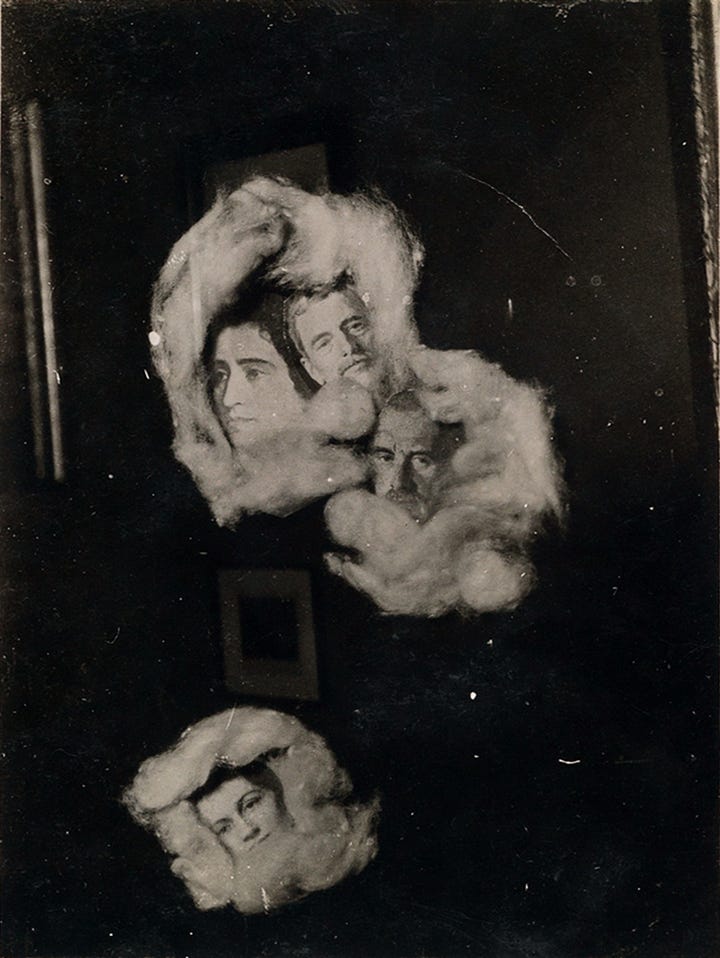
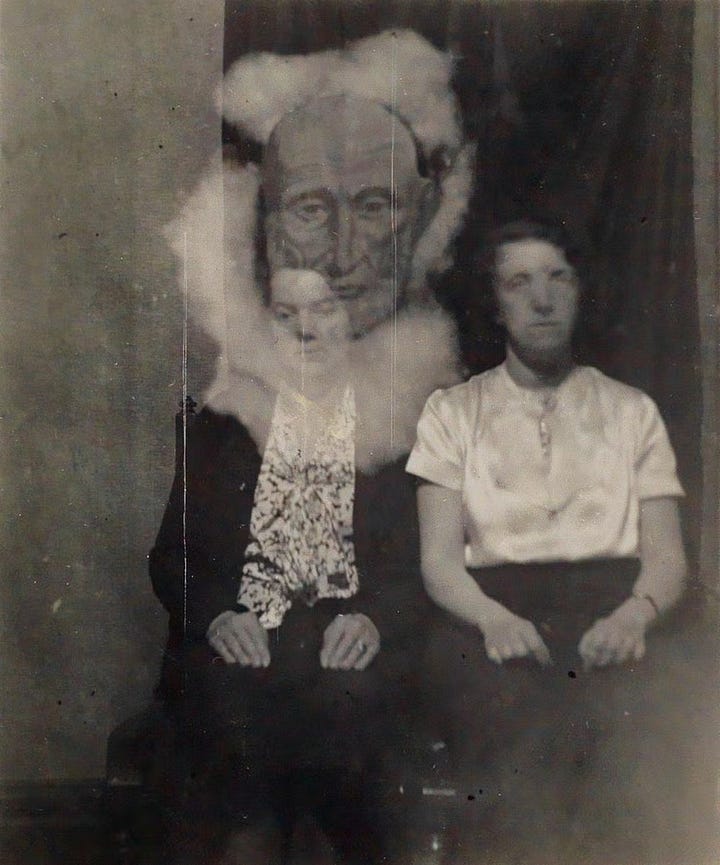

Setting this positive review aside for a moment, the Falconers were not so successful when bringing their business venture to South Africa. In the same year that Macintosh published his glowing article, the Falconers were convicted of fraudulent spirit photography and each fined ₤150 plus costs. The evidence gathered against them included dubious tools for their trade, including cotton wool and spirit face cut outs. The brothers appealed the charges, but were not successful. The presiding judge had no time for their fraudulent ways, nor any sympathy for “the credulous fools who supported them.” Despite this capture and fine, they returned to their home country and were advertising their services as late as 1938, per an advert in the publication The Greater World.
Based on what we now know about ghosts on film, the figure in the Newtown photograph is too small and not ethereal enough to be positively identified as a human ghost. I also have it on good authority that no double exposures or cotton wool were employed to achieve its final effect. As there are also no commonly known examples of photographs of ancestors from Southern Africa to explore, I cannot easily draw that comparison at this time except to remind readers that ancestors are frequently experienced through the other senses over sight.
FAERIE FEVER
Over centuries folklorists, anthropologists and others have documented oral history accounts of faerie sightings around the world, both benevolent and malevolent. During the era of the spirit photographers, some of the spiritualist crowd sought to prove the existence of faeries and their related kin like gnomes and elves using clairvoyant abilities and new technology. While the diversity of manifestations defies the possibility of any single text to define them in full, David Gow, editor of Light (1914-1931), initially described fairies as “simply ordinary human spirits, seen, as it were, at the wrong end of a clairvoyant telescope, and therefore very minute.” He later revised his opinion to conclude that “they are really life forms which have developed along some separate line of evolution, and which for some morphological reason have assumed human shape.”
One of the most ardent believers of the age was Sir Arthur Conan Doyle. Following on from his success as a writer of adventure and crime fiction, including the Sherlock Holmes stories, Conan Doyle also published multiple works of non-fiction dedicated to his spiritualist and paranormal explorations. This included a two-volume work on The History of Spiritualism, and in 1922 he published The Coming of the Fairies that prominently featured the story of the Cottingley faerie photographs, taken in Cottingley, West Yorkshire, England.
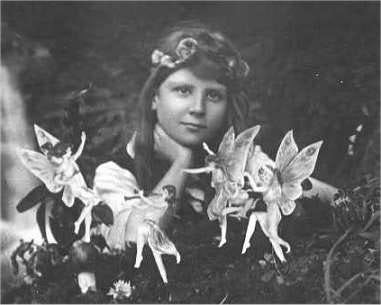
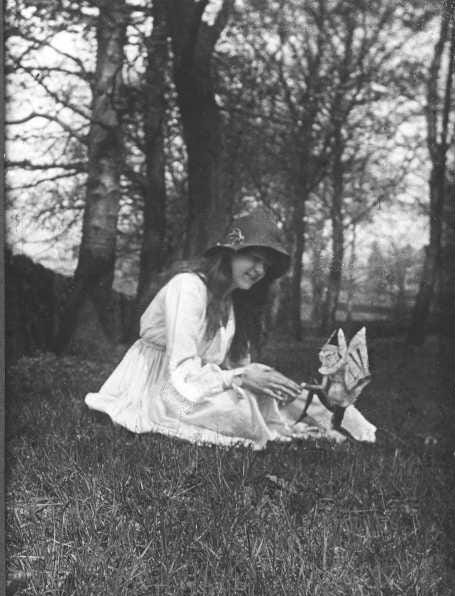
In 1917, cousins Frances Griffiths (aged 9) and Elsie Wright (aged 16) photographed a number of fairies near a stream below the Wright family home. By Conan Doyle’s estimations, after consultation with specialists from Kodak, the cousins’ photographs showed no signs of double exposure and the faeries showed signs of movement that subtly blurred their forms. By today’s standards, the photographs are clearly staged using cut out paper or card illustrations of faeries and other folkloric creatures. In their old age Elsie and Frances both admitted that the photographs had been faked. They also defended their actions against any claims of fraud, insisting that the photographs had always been intended as “a bit of fun” and shrugging off the folly of those who had wanted to believe they were real at all costs.
South Africa has no comparable photographic evidence of faerie folk, but given the archetype described by Gow and the vision created by the cousins in Cottingley, the figure in the Newtown photograph is of a similar size to what we might expect from a faerie or gnome. The sideways profile of a creature in action is also reminiscent of the scenes in the Cottingley pictures. However, the lack of detail on the figure’s body makes this positive identification more complicated. For her part, Frances Griffiths, who was born and raised in South Africa, did not believe there could be any faeries in Southern Africa. In 1918, she wrote to a friend in Cape Town and remarked:
Elsie and I are very friendly with the beck fairies. It is funny I never used to see them in Africa. It must be too hot for them there.

THE TOKOLOSHE MADE ME DO IT
While the Cottingley faeries are portrayed as benevolent, jolly characters, this is not the case across all cultures. In Ireland, faeries are given euphemisms such as ‘The Good People’, ‘The Wee Folk’, ‘The Other Crowd’ or simply ‘Them.’ The reluctance to name them underlines the fearful perception of their chaotic malevolence from repeated cases of petty bad luck to kidnapping infants and causing unnatural deaths. In the realm of South African folklore, no creature is more infamous than the Tokoloshe (Tokolosh, Tikoloshe, Tikaloshe, Thokolosi or Tokoloshi, depending on what part of the country you hail from). Variably it is described as a dwarf zombie, a bear-like creature, a gremlin or a figure with talons and red, glowing eyes. Originally an amorphous water spirit, the tokoloshe took a physical form as a protective measure against human effects on the waterways it called home. In some cases, it is merely a mischievous presence, but under the malevolent influence of a vengeful witch doctor it may cause an individual to become gravely ill or it may be driven to drag victims from their beds in the dead of night. In contemporary South Africa, the Tokoloshe may be responsible for anything from inserting tracking devices into their victims, turning people into sex slaves, meddling in relationships, ruining job opportunities, or robbing businesses.
The Daily Sun, South Africa’s most popular tabloid newspaper, regularly reports on the Tokoloshe’s antics and those of other paranormal figures. Explosive headline stories about ghosts, zombies, and witches can be seen on lamp posts across urban areas and they continue to hook readers. Although these stories are not usually accompanied by pictures of the perpetrators, there are a few examples of photographs that can be found from the last decade.
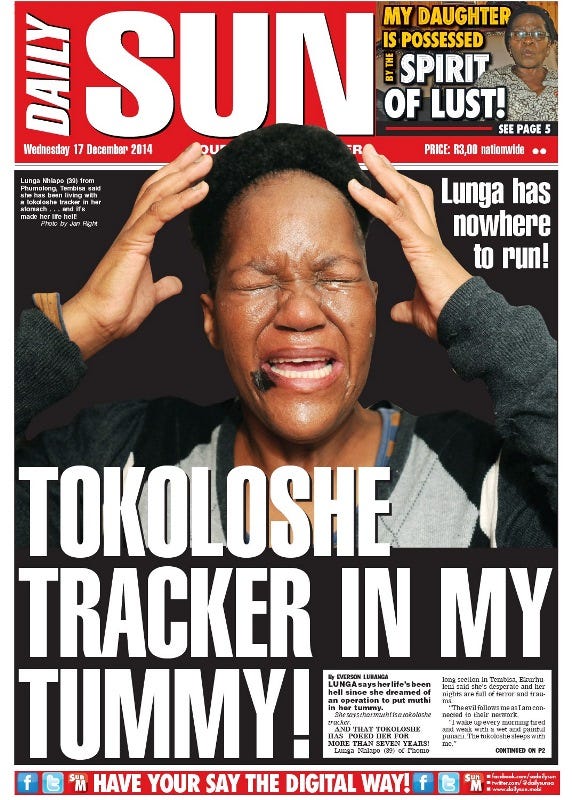
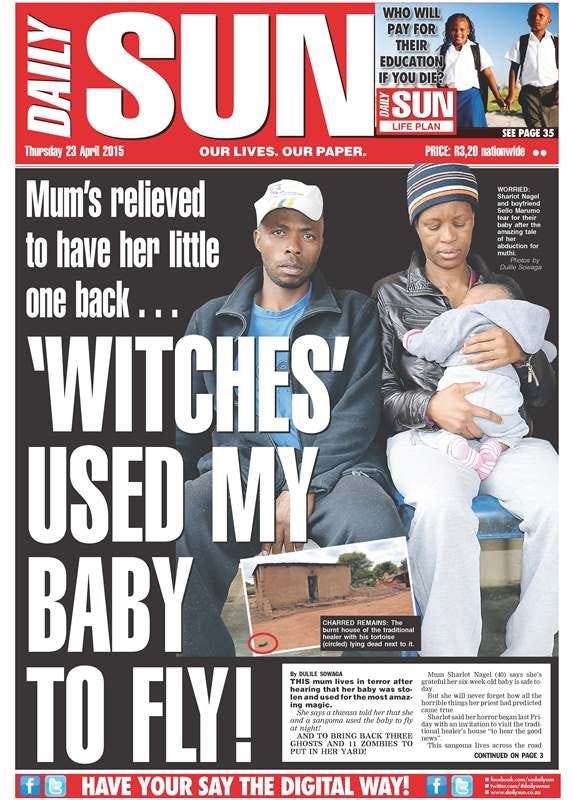
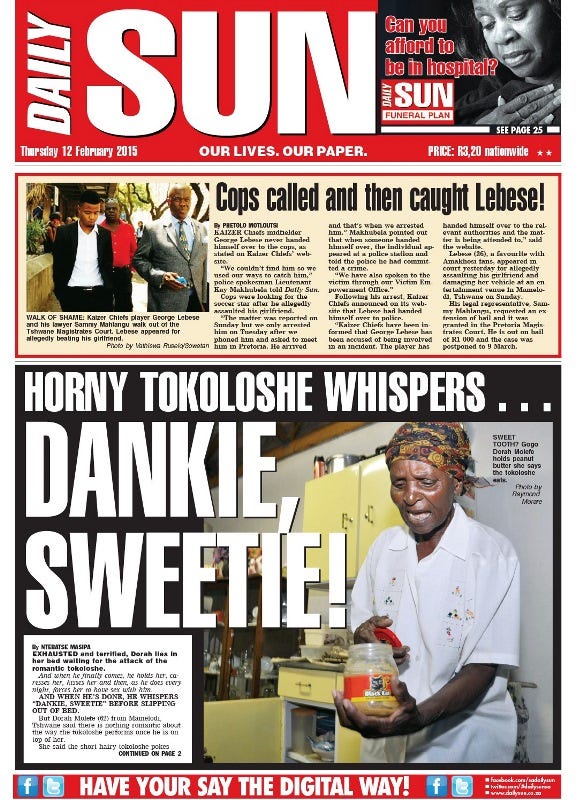
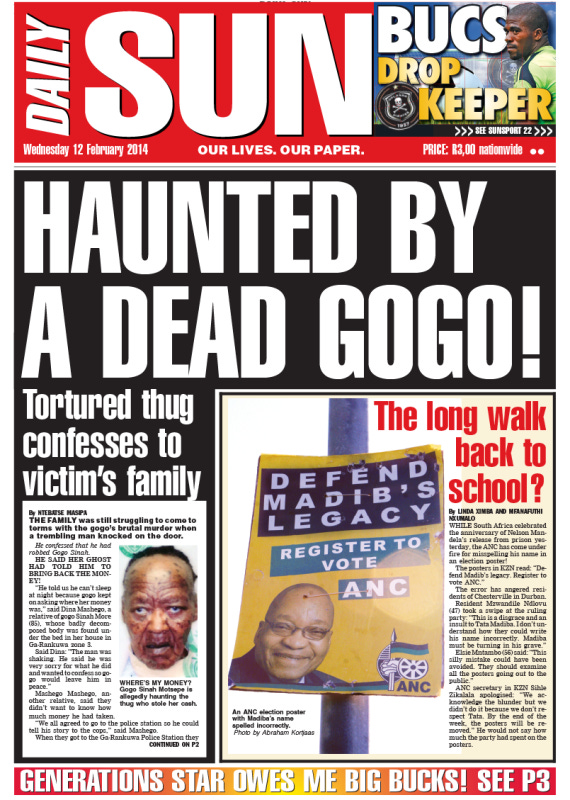
In November 2013, the Daily Sun published a blurry close up of a face alleged to be the Tokoloshe. The article describes the ominous appearance of a figure with a ‘dark head and the pink face and ears of a pig’ in a photograph taken by a child with a smartphone. The creature is ‘mysterious’ and ‘evil’, and he may even be ‘the devil himself’, according to the Daily Sun writers. In February 2015, a security guard submitted an equally spooky photograph of a ghost, taken during a night duty shift at a swimming pool in Gugulethu, Cape Town. The ghost photograph has some similarities to the spirit photographs of the nineteenth century. The body in the foreground, wrapped in cloth that gives the appearance of a death shroud, may be the result of a digital double exposure. With some scrutiny, the tokoloshe photograph could be identified as an out-of-focus household pet, perhaps a curious cat who popped into frame unexpectedly. While the writers of the Daily Sun might use an anomaly like the Newtown photograph to encourage these stories, it does not easily resemble any of the preternatural creatures currently on record.
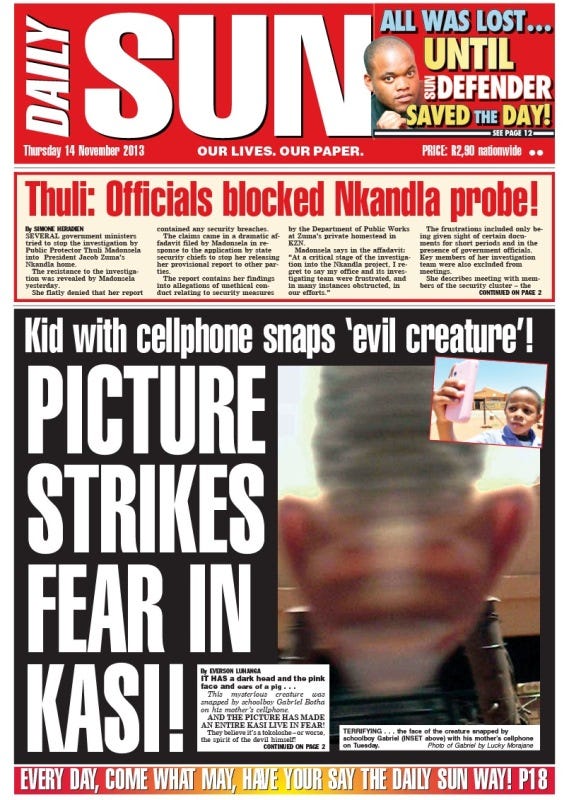
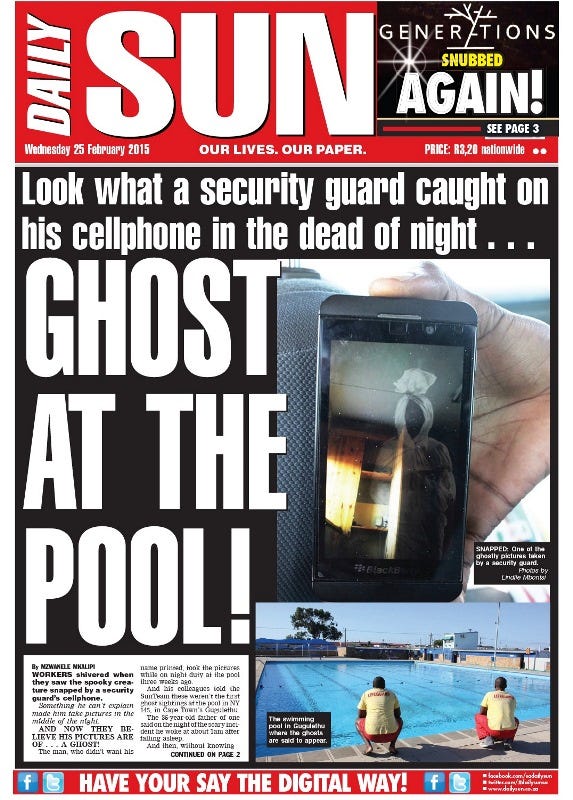
SEEING IS BELIEVING?
Like the Falconer’s customers, Arthur Conan Doyle and the spiritualists of yore, the contributors to and readers of the Daily Sun show that belief can sometimes be stronger than the requirement for evidence. In the opposite camp, Phoenix Paranormal SA are a South African paranormal investigation team that aims to capture and document reliable evidence of the paranormal, especially ghosts. They describe themselves as reasonably sceptical and only willing to accept the paranormal once all other possibilities have been considered and debunked. In conducting their investigations, they rely on electronic equipment to monitor or scan environments for disturbances to Electromagnetic Fields (EMF). They also take along digital cameras and recorders to document their excursions, but insist that the most important piece of equipment is the investigator themselves. An investigator should be prepared to encounter what they can’t understand and willing to consider all evidence in drawing a professional conclusion. Their EMF devices are also made-to-order for the public to conduct their own explorations of the unknown.

The Phoenix Paranormal team warn against falling for what they call ‘matrixing’ - a phenomenon also called pareidolia, apophenia or anthropomorphising. This common tendency has resulted in sightings of Jesus Christ on a slice of toast as well as anonymous faces in other inanimate objects - and it is not to be believed. It is advised to discount any images or videos of cluttered settings that may feature objects reminiscent of a face. The proportions of the face should also be considered, and whether the figure is made up of its own unique matter or is composed of other matter or debris from the immediate environment in the photograph or video. Even if these criteria are met, a paranormal encounter would be evidenced in other ways. Perhaps a spooky feeling that makes the hairs stand up on the back of the neck, a noticeable drop or rise in temperature or inexplicable sounds. In essence, according to the investigators, the photograph or video alone is compelling, but not enough.
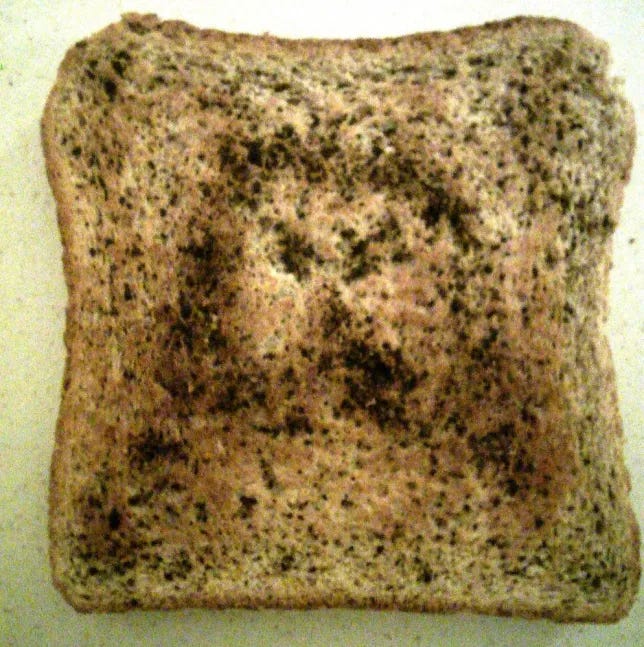
On the day the Newtown photograph was taken, there were no other signs that anything paranormal was in the vicinity. As previously mentioned, the proportions of the figure are too small to be a human ghost, but the white matter that it is made of holds no relationship with the other materials around it. Its biomatter appears to be unique. It is also easily anthropomorphised due to its recognisable posture. The figure has been captured in action on its way to do something, whether for good or for ill.
THE STORIES WE TELL
Ghost, fairy, or the tokoloshe, or a simple case of pareidolia in the Highveld sun? The Newtown photograph is a personal curiosity that forms part of a greater canon of similar images of things that we can’t easily explain. All of the possible culprits from that day in Newtown have allegorical significance. They carry human stories about living and dying, and the space(s) between. Ghost stories and faerie tales are rooted in reality, but stretch beyond the day-to-day to engage with societal issues, touch uncomfortable truths and play out the archetypal struggle between good and evil. In these narratives, the paranormal antagonists act as agents of malevolent chaos on the living, with the most severe encounters resulting in what many fear most - death. By the same token, their ‘existence’ can bring comfort to those seeking other worlds and/ or other lives for themselves or those they love. Often humour will be inserted in the telling of these grim tales to provide relief from the darker elements. This is especially true of the stories printed in the Daily Sun that aim to both shock and entertain thousands of South Africans daily. Despite having no scientific evidence to prove their existence (to date), these invisible citizens are intangible cultural artefacts from the past that still have a place in contemporary society. In many ways they are necessary to South Africans and others to examine and understand the world around us.
What are your thoughts? Have you seen something mysterious in your neighbourhood, or better yet, do you have a photo of your own? If so, I really want to hear about it! 💀
Sources
The Piet Botha Psychic Photograph. 3 September 1910. Light: A Journal of Psychical, Occult, and Mystical Research. 3 September 1910.
http://iapsop.com/archive/materials/light/light_v30_n1547_sep_3_1910.pdf
Spirit Photographs by the Falconer Brothers. October, 1931. Alex Mackintosh, for The International Psychic Gazette. http://iapsop.com/archive/materials/international_psychic_gazette/international_psychic_gazette_v20_n217_oct_1931.pdf
Fifty Years Of Psychical Research A Critical Survey. 1939. Harry Price. https://archive.org/details/in.ernet.dli.2015.172901/mode/2up
The Coming of the Fairies. 1922. Sir Arthur Conan Doyle. https://archive.org/details/comingoffairies00doylrich/
The tales of the Tokoloshe: safeguarding intangible cultural heritage using virtual reality. 2018. Skovfoged, Milo & Viktor, Martin & Sokolov, Miroslav & Hansen, Anders & Nielsen, Helene & Rodil, Kasper. DOI: 10.1145/3283458.3283484
On the mobility of ghosts: Spectral journeys in the South African lowveld. 2023. Isak Niehaus. DOI: 10.1017/S0001972023000141
Phoenix Paranormal South Africa website. https://phoenixparanormal.co.za/
Second coming of Christ: Slice of toast bears face of Jesus himself. 2014. Amy Willis, for Metro.co.uk. https://metro.co.uk/2014/10/15/second-coming-of-christ-slice-of-toast-bears-face-of-jesus-himself-4906780/
Daily Sun front pages found at: politicsweb.co.za

